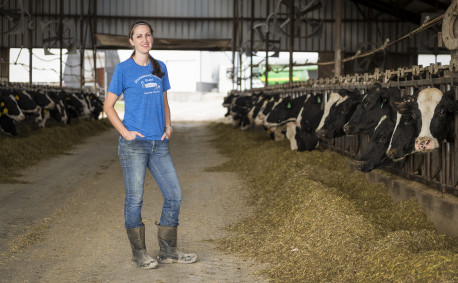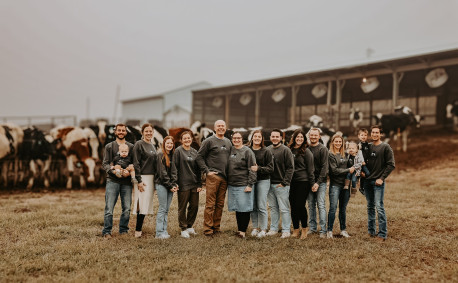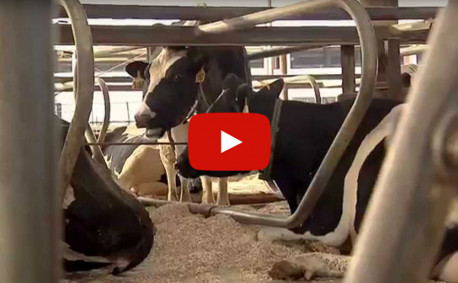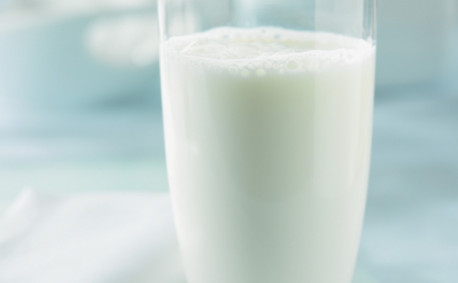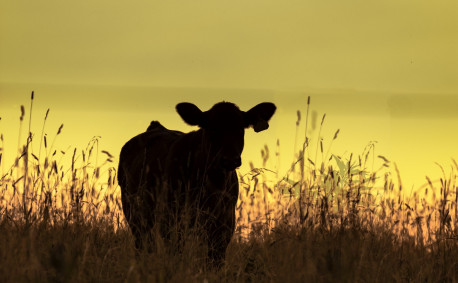Fun Milk Facts
How much do you know about milk and how it’s produced? The positive impact of dairy farming in Kansas is significant and far-reaching, playing an important role in our economy, our health and our efforts toward a more sustainable future. Learn all about moo juice with this dairy trivia.
Kansas Dairy by the Numbers
The Kansas Livestock Association did a little research and came up with these at-a-glance facts about dairy in the Sunflower State:
- Kansas is home to 173,000 milk cows and about 228 licensed dairy herds.
- The average Kansas dairy cow produces about 7.55 gallons of milk per day. That’s more than 2,755 gallons of milk over the course of a typical year.
- Kansas ranks 16th in the nation for milk production, with our dairies producing 4.1 billion pounds of milk in 2021. We exported $124 million in dairy products in 2020.
- About 75% of the milk produced in Kansas is processed in-state, which is great for economic development. Kansas has six plants that produce one or more dairy products (think Alma Creamery, mmm!) and nine on-farm or specialty processing facilities that produce cheese and ice cream, among other products.
Get to know some of the dairy farmers behind these statistics.
FACT: Milk Is in High Demand
More Milk, Please! Consumer trends monitored by Midwest Dairy show demand for fresh, local foods is rising like cream to the top of the pail. Milk, with its swift, two-day journey from farm to store, is a prime example of both. It’s also an excellent choice for the growing number of Americans making diet decisions aimed at boosting immunity, thanks to its zinc content and probiotic benefits. The organization also finds that consumers are increasingly looking to dairy’s comfort food status as a way to make healthy, inexpensive at-home meals feel more indulgent. Milk has never been more popular!
FACT: Dairy Is Set to Become Greenhouse-Gas Neutral By 2050
Methane, Manure and Maximizing Sustainability. Dairy producers have been actively working on efficiency for many years, an effort that has really paid off (literally). In 2007, according to Midwest Dairy, the industry was able to produce a gallon of milk using 90% less land and 65% less water than in 1944, resulting in a 63% smaller carbon footprint. Dairy farming practices have only become more innovative and technologically sophisticated since then, and in 2017, producing a gallon of milk required 30% less water and 21% less land than it did in 2007. That's a carbon footprint shrinkage of an additional 19%.
And about those burps: You’ve probably heard about cattle belching high levels of methane — a potent greenhouse gas — to the atmosphere, but did you know the dairy industry is responsible for only 2% of our national greenhouse gas emissions? Nonetheless, it has set a goal of net zero emissions by 2050.
About a third of dairy’s methane emissions come from cow burps, while manure decomposition accounts for the rest. Researchers have developed (and continue to develop) feed solutions that reduce the gas from a cow’s front end, and as for those patties, ploppies and meadow muffins, there’s an even bigger development: Manure methane can be captured and used as a source of renewable natural gas.
FACT: Dairy Is a Nutritional Powerhouse
Dairy and Your Diet. Three servings of low-fat dairy a day help keep the hypertension, broken bones, inflammation and more away! Milk and other dairy products contain a host of vitamins and nutrients, including:
- Protein to build and repair muscle
- Zinc for healthy immune systems
- Vitamin A for vision and skin
- Calcium, phosphorus and vitamin D for your bones and teeth
- B vitamins (B12, Riboflavin, B5, niacin) for energy
Low-fat dairy is a major player in the Dietary Approaches to Stop Hypertension (DASH) diet, and fermented dairy products contain probiotics that are helpful for digestion and immune function.
Lactose intolerant? Lactose intolerance doesn’t mean dairy avoidance. You may be surprised at how many beneficial dairy products you’re able to consume.
If you want to learn more about lactose intolerance, check out the U.S. Dairy Science Summary: Dairy Innovations and Lactose Intolerance report.
At every stage of our lives, dairy is an important part of a healthy diet. Learn about the role it plays in our bodies from infancy through adulthood, and enjoy it in a variety of ways with these great recipes from Midwest Dairy.
Milk It for All It’s Worth
Milk is clearly a serious superfood, and a versatile one at that! Check out these creative upcycling suggestions from the American Dairy Association North East.
- Make buttermilk by combining 1 tablespoon lemon juice or distilled white vinegar for every 1 cup of milk.
- Make sour cream with 1/4 cup milk, 3/4 teaspoon distilled white vinegar, and 1 cup heavy cream.
- Create crème fraiche by mixing 3 cups heavy cream with 3 tablespoons buttermilk.
- Use milk, kefir or buttermilk instead of water in baking mixes.
- Freeze milk and yogurt in ice cube trays to add creaminess to smoothies, soups and sauces.
- Combine fruits or veggies past their prime with dairy. A good smoothie recipe will help you use up veggies, herbs and fruit and avoid waste.
- Use clean, empty yogurt containers to start seedlings for your garden.
- Ricotta, cottage cheese or sour cream containers are perfect for storing leftovers, sauces and soups in the fridge or freezer.
- Cut off milk carton tops and use the bottoms to create planters or flower vases. Check out these other crafty uses for plastic milk jugs.


